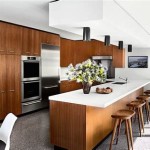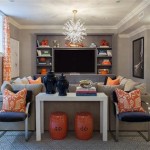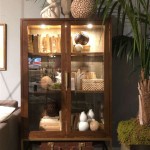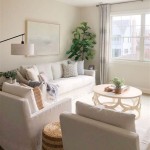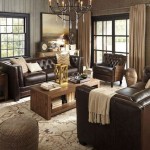```html
How To Decorate a Sitting Room In the Master Bedroom
Creating a sitting room within a master bedroom offers a private sanctuary for relaxation, reading, or quiet conversation. This dedicated space can elevate the overall comfort and functionality of the master suite, transforming it from a mere sleeping area into a multi-functional retreat. Careful planning and thoughtful design are essential to ensure the sitting room complements the bedroom's aesthetic while providing a distinct and inviting atmosphere.
The process begins with assessing the available space and determining its intended purpose. Consider how the sitting area will primarily be used: is it for reading, entertaining, or simply lounging? This will dictate the type and scale of furniture needed, as well as the overall layout and design.
Integration with the existing bedroom décor is crucial. The sitting room should feel like a natural extension of the bedroom, not a jarring addition. This can be achieved through consistent color palettes, similar materials, and a cohesive design style. However, the sitting room can also offer an opportunity to introduce subtle variations to create visual interest and distinguish it from the sleeping area.
Effective use of lighting, both natural and artificial, is paramount. Natural light enhances the feeling of spaciousness and can be maximized through strategic window placement and the use of light-filtering window treatments. Artificial lighting should be layered, providing ambient, task, and accent lighting to cater to different activities and moods.
Attention to detail, including the selection of accessories and decorative elements, is what ultimately transforms a functional space into a personalized and inviting retreat. Thoughtfully chosen artwork, rugs, cushions, and throws can add warmth, texture, and visual interest, creating a space that reflects individual style and preferences.
Defining the Space: Layout and Zoning
One of the initial steps in decorating a sitting room within a master bedroom is to clearly define the space. This involves physically delineating the sitting area from the sleeping area, creating a sense of separation and purpose. Several techniques can be employed to achieve this, each with its own advantages and considerations.
Area rugs are a versatile and effective way to define the sitting room. By placing a rug beneath the furniture arrangement, the space is visually anchored and distinguished from the surrounding bedroom area. The size of the rug should be proportionate to the furniture group, extending beyond the edges of the seating to create a cohesive and grounded look.
Furniture arrangement itself can serve as a natural divider. A strategically placed sofa, loveseat, or even a console table can act as a subtle barrier, separating the sitting area from the sleeping area. The orientation of the furniture should encourage conversation and create a sense of intimacy within the sitting room.
Architectural elements, such as partial walls, screens, or bookshelves, can provide a more defined separation. These elements offer a degree of privacy and noise reduction while still allowing light to filter through. Open shelving can act as a visual divider while also providing storage and display space.
Changes in flooring can also delineate the space. Transitioning from carpet in the bedroom to hardwood or tile in the sitting area can create a distinct visual boundary. This technique is particularly effective if the bedroom and sitting room have different color palettes or design styles.
Ultimately, the choice of method for defining the space depends on the size and layout of the master bedroom, as well as the desired level of separation. The goal is to create a clear distinction between the two areas without making the overall space feel cramped or fragmented.
Furniture Selection and Placement
The selection of furniture is central to the functionality and aesthetic of the sitting room. The pieces chosen should be comfortable, stylish, and appropriately scaled for the space. Careful consideration should be given to the intended use of the sitting room, as this will influence the type and arrangement of furniture needed.
A comfortable seating arrangement is paramount. Depending on the size of the space, this may include a sofa, loveseat, armchairs, or a combination thereof. The seating should be upholstered in a durable and aesthetically pleasing fabric that complements the overall color scheme of the bedroom. Consider the depth and height of the seating to ensure ergonomic comfort for extended periods of sitting.
A coffee table or ottoman provides a central surface for placing drinks, books, or decorative items. The size and shape of the table should be proportionate to the seating arrangement. An ottoman can serve as both a footrest and an additional seating option.
Side tables are essential for providing individual surfaces for lamps, books, and other personal items. These tables should be placed within easy reach of the seating, allowing for convenient access to essential items.
A bookshelf or cabinet can provide storage and display space for books, accessories, and personal collections. This can add visual interest and personality to the sitting room while also keeping the space organized and clutter-free.
The placement of furniture should encourage conversation and create a sense of intimacy. Arrange the seating in a way that allows for easy interaction between occupants. Avoid placing furniture too close together, as this can make the space feel cramped and uncomfortable.
Consider the flow of traffic within the sitting room and the bedroom as a whole. Ensure that there is ample space to move around the furniture without obstructions. Avoid blocking doorways or pathways with furniture.
Scale is crucial in furniture selection. Overly large furniture can overwhelm a small sitting room, while undersized furniture can make the space feel incomplete. Measure the space carefully and choose furniture that is appropriately scaled for the room's dimensions.
Lighting, Color, and Accessories
Lighting, color, and accessories are the final touches that bring the sitting room to life. These elements contribute significantly to the overall ambiance and aesthetic, creating a space that is both functional and visually appealing.
Layered lighting is essential for creating a versatile and inviting atmosphere. Ambient lighting provides overall illumination, while task lighting provides focused light for reading or other activities. Accent lighting highlights specific features or artwork, adding depth and visual interest to the space.
Table lamps are a classic addition to a sitting room, providing both ambient and task lighting. Floor lamps can offer a similar function while also adding height and visual interest to the space. Consider using dimmers to adjust the intensity of the lighting to suit different moods and activities.
Natural light is a valuable asset to any sitting room. Maximize the amount of natural light by using sheer curtains or blinds that allow light to filter through. Avoid blocking windows with furniture or heavy draperies.
The color palette of the sitting room should be consistent with the overall color scheme of the master bedroom, but it can also offer an opportunity to introduce subtle variations. Choose colors that are calming and relaxing, such as soft blues, greens, or neutrals. Accent colors can be used to add pops of vibrancy and visual interest.
Accessories play a crucial role in personalizing the sitting room and adding warmth and texture. Throw pillows and blankets can add comfort and visual interest to the seating arrangement. Rugs can define the space and add a layer of warmth underfoot.
Artwork is a powerful way to express personal style and add visual interest to the walls. Choose pieces that complement the color scheme and overall design of the sitting room. Photographs, prints, or original paintings can all be used to create a personalized and inviting atmosphere.
Plants can add life and freshness to the sitting room. Choose plants that thrive in indoor conditions and that complement the overall aesthetic of the space. Decorative objects, such as candles, vases, and sculptures, can add personality and visual interest to the shelves and tables.
The key to successful accessorizing is to avoid clutter. Too many accessories can make the space feel overwhelming and disorganized. Choose a few key pieces that you love and that reflect your personal style. Arrange them thoughtfully to create a balanced and harmonious composition.
```
Pin On Modelo De Dormitorios

Pin On Bedrooms

Main Bedroom Sitting Area Ideas

10 Best Bedroom Sitting Area Ideas For Private Relaxation Decorilla

Create A Cozy Master Bedroom Sitting Area For Relaxation And Comfort

Pin On Drapery Ideas

Budget Friendly Window Treatments A Cozy Sitting Area Worthing Court

Master Suite Inspiration Luxury Lounge Ideas Architectural Digest

How To Create A Master Bedroom Sitting Area Discovery Homes Blog

Master Bedroom Sitting Area Design Ideas
Related Posts

